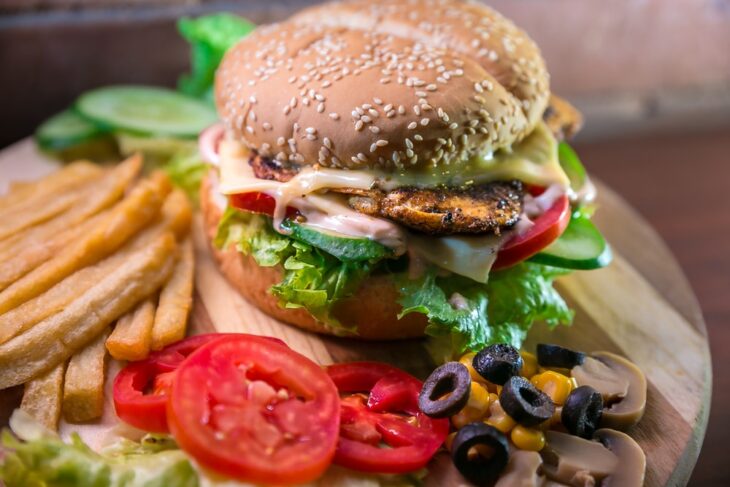To order in or to cook: That is the question. For many hard-working professionals and budget-conscious families, it’s a question that comes up quite often, in fact.
But too often, people assume that ordering in is a luxury you have to pay a premium for, whereas cooking at home is a budget-friendly alternative that takes time and effort.
That isn’t always the case. Some meals are actually cheaper to order in than to make at home. These dishes don’t just save you time and strain in the kitchen; they also save you money. In this article, let’s explore six popular meals that cost less to order than to make from scratch.
Contents
How The List Came Together

Before diving into the specific dishes, let’s quickly run through some methodology.
You’ll notice a commonality in all the meals listed below: They each have several components. Each moving part of a dish requires you to buy unique ingredients, adding to the total cost of the meal. While it’s possible to skate by on a few of these dishes using everyday pantry items, most require you to buy uncommon ingredients. Anyone who has a mostly-full bottle of fish sauce gathering dust in the back of their pantry understands how costly it can be to buy single-use items for dinner.
Next, let’s address the issue of “food cost variation.” Different ingredients cost different amounts depending on geographic location. To simplify things, this article used the average food costs in a single city – Miami – according to Numbeo, popular online food merchants, and other online sources.
Finally, to standardize the cost of ordered items, this article used getREEF.com where applicable. getREEF is an affordable option for ordering in, since they don’t charge delivery or service fees. Plus, they are widely available in North American and international cities.
1. Classic Buffalo Wings
Right out of the gate, the cost of raw chicken wings from the supermarket is nearly as high as restaurant-prepared wings. Depending on where you live, supply chain issues might make grocery store chicken wings even more expensive.
This game-day favourite also requires a few additional ingredients that push it over the threshold. You need to buy fryer oil, hot sauce and butter to make classic Buffalo-style chicken wings. And to complete the plate (because what’s a dinner without veggies), you also need to buy carrots and celery (often sold in bunches). Finally, a buffalo wing is only as good as its dipping sauce, so you’ll need to add blue cheese to the shopping list.
Altogether, a pound of chicken wings made at home is generally more expensive than a pound ordered on getREEF. Plus, your house won’t smell like fryer oil!
2. Burgers and Fries

Source: unsplash.com
Burgers and fries feature a surprising number of components. While burgers make sense when feeding a large crowd at a cookout – when buying in bulk is necessary – they don’t make better financial sense when cooking for a small family.
At a minimum, you need to buy ground beef, cheese, burger buns, tomatoes, a head of lettuce, an onion, a bottle of mayonnaise and a bottle of ketchup. You also need to buy either potatoes and fryer oil, or boxed fries (the latter of which is a pale imitation of restaurant French fries).
All told, burger night for a small family is generally cheaper when you skip the grill and go straight for a food delivery platform.
3. Poke Bowls
Any dish that utilizes sushi-grade fish will generally be cheaper to order than to make at home. Sushi-grade fish like tuna and salmon can cost an arm and a leg at specialty grocery stores. (Not to mention, it’s safer to leave raw fish to the pros).
Poke bowls, the popular Hawaiian delicacy, also require you to buy sushi rice, green onions, a bottle of soy sauce, a bottle of sesame seed oil, and a bottle of rice wine vinegar. The dish generally also calls for vegetables like edamame beans and avocadoes, which tend to cost more than standard vegetables.
These ingredients tip the average per-plate cost of homemade poke bowls to over $20. Contrast that with fee-less delivery poke bowls, which are around $16.
4. Fully Loaded Burritos
Fully loaded burritos take time, effort and a lot of shopping to pull off correctly. We won’t rattle off the entire ingredient list for loaded burritos, as it would take up far too much space, but you can expect to buy at least 20 unique ingredient items.
Restaurants benefit from buying bulk, meaning they can shop in large quantities for dishes they know they will make every day. Families and at-home cooks don’t have the same luxury.
All told, the average cost of a homemade burrito is around $23. On the other hand, a conveniently delivered burrito rings up at around $14.
5. Butter Chicken with Rice and Naan

Source: outlookindia.com
If you already have a varied spice rack, you can pull off authentic butter chicken relatively inexpensively. Unfortunately, most people need to make a trip to the grocery store or Indian grocer to procure their ingredients.
You need spices like coriander seed, cumin, turmeric, garam masala, chilli powder and (tough to find) fenugreek leaves when mixing a butter chicken spice blend. Next, you have to buy chicken and butter (obviously), as well as cream, tomatoes, onions, rice and naan bread.
Given how inexpensive most Indian delivery restaurants are, it’s a safer bet to order in.
6. Traditional Shrimp Pad Thai
It’s possible to make something resembling Pad Thai for relatively cheap. For instance, home cooks often substitute common ingredients like ketchup and soy sauce for more traditional components like tamarind paste and fish sauce.
However, if you’re looking for a traditional Pad Thai – the kind you enjoy at a good restaurant – it’s cheaper to order delivery. Pad Thai requires a long list of ingredients: rice noodles, prawns, bean sprouts, peanuts, tamarind, fish sauce, palm sugar, eggs, and more. By the time you’re finished shopping for everything, you may be too exhausted to cook!
Next time you’re weighing your dinner options, considering whether to cook or order food delivery, think about the true cost of what you’re making. Sometimes, it’s cheaper and more convenient to let someone else do the cooking.
